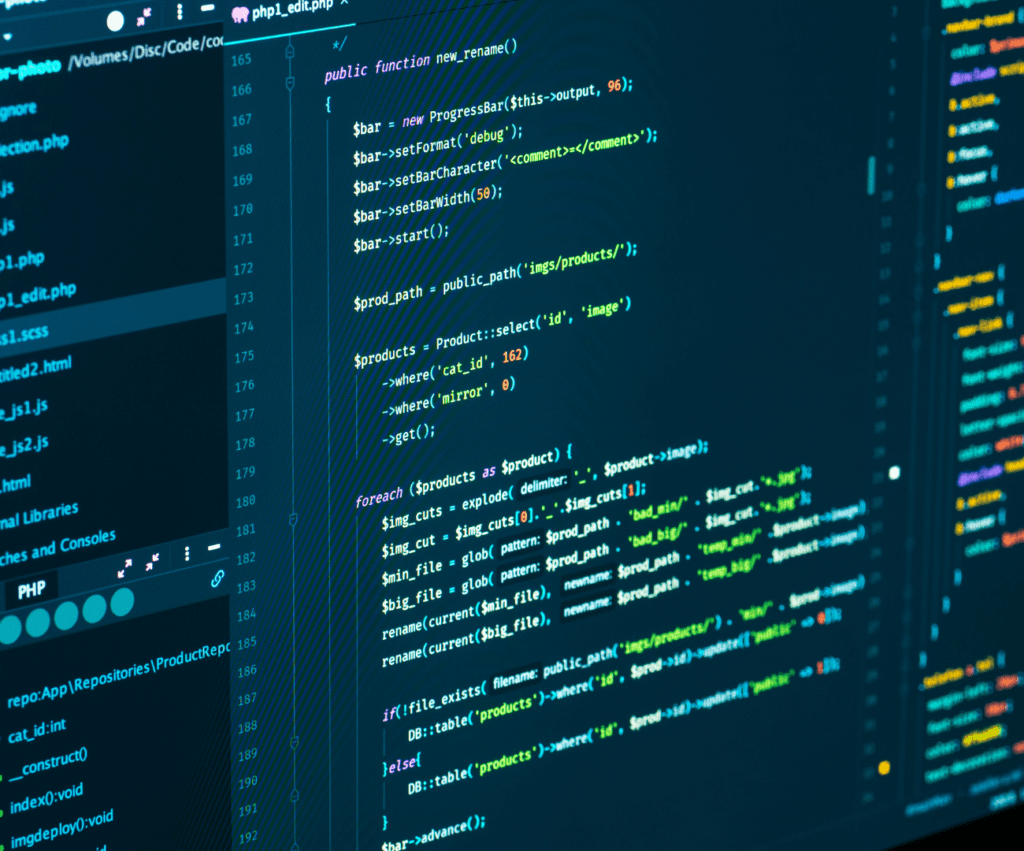Ever since the inception of computers, there have been over 8,000 coding languages out there.
Right now, almost 250 – 2,500 coding languages are being used in different capacities. Some of these languages are insanely popular, while others fall under the category of the most basic coding language.
Regardless, 2,500 is a big number – and that too, with a sense of vagueness as far as the best beginner programming language issue is concerned. Beginner level coders, especially if there’s a lack of mentors, have a high probability of derailing and learning those beginner coding languages that aren’t really intended for them.
Top if off with the possibility that many programming languages are part of the Full Stack, MEAN, or MERN criterion, it’s hard to tell which programming language is indeed the best beginner programming language.
For that reason, we decided to pick up a handful of beginner coding languages in an effort to help those developers who are set on carving a career path later down the road.
The focus of this post will be on popular categories of coding languages for beginners, their pros and cons, and their benefits to illustrate the concept of whether those coding languages are worth pursuing or not.
Let’s get started.
5 Categories of Beginner Coding Languages That You Need To Know

The following categories of beginner coding languages start as the most basic coding language, eventually sprouting to advanced level for programmers.
- Low-Level Beginner Coding Languages
Low-level computer languages are programming languages that provide little to no abstraction from the hardware of a computer system.
These languages are typically closer to the machine code and hardware architecture, allowing programmers to have fine-grained control over the system’s resources. Here are some examples of low-level computer languages:
- Machine Code:
This is the lowest level of programming language and consists of binary instructions that are directly executed by the computer’s processor.
Machine code is specific to a particular computer architecture and is extremely difficult for humans to read and write.
- Assembly Language:
Assembly language is a low-level programming language that uses mnemonic codes to represent individual machine instructions.
It provides a symbolic representation of the underlying machine code, making it easier for programmers to understand and write code.
Assembly language is specific to a particular processor architecture.
- C and C++:
While C and C++ are often categorized as high-level languages, they also provide low-level programming capabilities.
They offer direct memory manipulation, pointer arithmetic, and access to hardware resources.
Programmers can write inline assembly code within C/C++ programs, giving them fine control over the hardware.
- Rust:
Rust is a relatively new programming language that combines low-level control with strong memory safety guarantees.
It provides features such as manual memory management, direct hardware access, and fine-grained control over system resources.
Rust’s borrow checker enforces strict ownership and borrowing rules, preventing many common programming errors.
- Fortran:
Fortran (short for Formula Translation) is one of the oldest programming languages still in use today.
It is primarily used in scientific and engineering applications that require high performance.
Fortran provides low-level control over memory and hardware, allowing programmers to optimize their code for efficiency.
- High-Level Computer Languages
High-level computer languages are programming languages that provide a higher level of abstraction from the hardware and are designed to be more user-friendly and easier to understand and write compared to low-level languages.
They abstract away many low-level details and provide built-in functionality and libraries for common tasks. Here are some examples of high-level computer languages:
- Python:
Python is a popular high-level language known for its simplicity and readability.
It emphasizes code readability and has a large standard library that provides a wide range of functionalities.
Python is widely used in various domains, including web development, data analysis, artificial intelligence, and automation.
- Java:
Java is a general-purpose high-level language that is designed to be platform-independent, allowing programs to run on any system with a Java Virtual Machine (JVM).
It has a strong emphasis on object-oriented programming and is used for developing a wide range of applications, including desktop, web, mobile, and enterprise software.
- C#:
C# (pronounced C-sharp) is a modern, object-oriented language developed by Microsoft.
It is used primarily for developing Windows applications, web services, and games using the .NET framework. C# is similar to Java in terms of syntax and features.
- JavaScript:
JavaScript is a high-level scripting language primarily used for web development.
It is the language of the web and enables interactivity and dynamic content on websites. JavaScript can also be used on the server side (Node.js) and for mobile app development (React Native, Ionic).
- Ruby:
Ruby is a dynamic, object-oriented language known for its simplicity and elegance. It focuses on programmer productivity and has a strong emphasis on readability.
Ruby is commonly used in web development, especially with the Ruby on Rails framework.
- Swift:
Swift is a modern programming language developed by Apple for iOS, macOS, watchOS, and tvOS development. It is designed to be safe, fast, and expressive.
Swift combines features from various languages, providing a more intuitive and concise syntax for developing applications on Apple platforms.
- System Languages
System languages are programming languages that are specifically designed for system-level programming tasks.
These languages provide low-level control over hardware resources and are commonly used to develop operating systems, device drivers, firmware, and other software that interacts closely with the underlying system.
- Ada:
Ada is a high-level language designed for high-integrity systems, including embedded and real-time systems.
It has strong static typing and features built-in support for concurrency and reliability. Ada is used extensively in aerospace, defense, and other safety-critical applications.
- D:
D is a modern programming language that aims to combine the power and performance of system languages like C++ with the productivity and safety of high-level languages.
It provides manual memory management, direct hardware access, and features such as garbage collection and built-in concurrency support.
Rust and C/ C++ are also part of this category of system languages.
Since we already mentioned them earlier, we won’t be elaborating on those in this section.
- Scripting Languages
Scripting languages are programming languages that are primarily used for scripting or automation tasks.
They are often interpreted or executed directly without the need for compilation, making them flexible and easy to use for various purposes.
- Python:
Python is a versatile scripting language known for its simplicity and readability.
It has a wide range of libraries and frameworks that make it suitable for tasks such as web development, data analysis, automation, and scripting.
Python’s syntax emphasizes code readability, which contributes to its popularity.
- Perl:
Perl is a scripting language that originated in the Unix environment and gained popularity for its powerful text-processing capabilities.
It excels in tasks such as string manipulation, file processing, and system administration.
Perl’s rich set of built-in functions and regular expression support make it a popular choice for scripting tasks.
- Ruby:
Ruby is a scripting language known for its simplicity and expressiveness.
It focuses on developer productivity and emphasizes code readability.
Ruby gained popularity with the Ruby on Rails web framework and is often used for web development, automation, and scripting tasks.
- Shell scripting languages:
Shell scripting languages, such as Bash (Bourne Again SHell), are specifically designed for scripting within a command-line shell environment.
They provide powerful tools for automating system tasks, file management, and interacting with operating system utilities.
Shell scripting is particularly useful for system administration and automation on Unix-like systems.
- PowerShell:
PowerShell is a scripting language developed by Microsoft for task automation and configuration management in the Windows environment.
It provides extensive integration with the Windows operating system and allows for the automation of administrative tasks, system management, and scripting of various Windows applications and services.
- Domain Specific Languages
Domain-specific languages (DSLs) are programming languages or language constructs specifically designed to address a particular domain or problem space.
Unlike general-purpose programming languages, which are designed to be flexible and applicable to a wide range of tasks, DSLs are tailored to address specific needs within a narrower context.
DSLs aim to provide a higher level of abstraction and expressiveness, making it easier for users to solve problems within their specific domain.
- SQL (Structured Query Language):
SQL is a DSL designed for working with relational databases.
It provides a declarative syntax for defining, querying, and manipulating data stored in a database management system. SQL enables efficient data retrieval, data manipulation, and data definition operations.
- Regular Expression (RegEx):
Regular expressions are a DSL for pattern matching and manipulation of text.
They provide a concise and expressive syntax for searching, matching, and replacing specific patterns in strings. Regular expressions are commonly used in text processing, data validation, and searching tasks.
- HTML/CSS:
HTML (Hypertext Markup Language) and CSS (Cascading Style Sheets) are DSLs for defining the structure and presentation of web documents.
HTML is used to structure the content and define the elements on a web page, while CSS is used to style and format the visual appearance of the elements.
- MATLAB:
MATLAB is a programming language and environment specifically designed for numerical computation, data analysis, and visualization.
It provides a range of built-in functions and syntax that simplify mathematical and scientific programming tasks.
MATLAB’s syntax and toolboxes cater to engineers, scientists, and researchers working in fields such as signal processing, image processing, and control systems.
- R:
R is a statistical programming language and environment designed for data analysis and statistical computing.
It offers a wide range of packages and functions for statistical modeling, data visualization, and machine learning. R is widely used in academia and industries related to data analysis, statistics, and research.
- VHDL/Verilog:
VHDL (VHSIC Hardware Description Language) and Verilog are hardware description languages used for designing digital circuits and systems.
These DSLs provide a way to describe the behavior and structure of electronic systems, allowing for simulation, synthesis, and verification of digital designs.
DSLs are developed to provide a more concise, expressive, and intuitive way of solving problems within a specific domain.
They allow domain experts to work at a higher level of abstraction, reducing complexity and increasing productivity in their respective areas.
Easy To Learn Vs High In Demand Beginner Coding Languages

It’s worth noting that the demand for programming languages may vary depending on geographical location, industry, and emerging trends.
While it can be beneficial to learn an easy-to-learn language initially to gain programming fundamentals, combining it with a high-demand language can provide a broader skill set and enhance job prospects.
Easy-to-learn programming languages are Python, HTML/CS, and Javascript. Whereas, high-in-demand languages are Java, JavaScript, Python, and C++.
Case in point: none of these languages can be deemed the ultimate go-to coding language for beginners, as all of them have pros and cons, applications, and revenue generation potential.
Therefore, take your pick from any of the most basic coding language(s) and get started.
You’ll need logic, consistency, and hard work as the most essential traits for mastering these languages.
Besides, once you’re an expert, we can guarantee you a rewarding career path.
Good luck.


